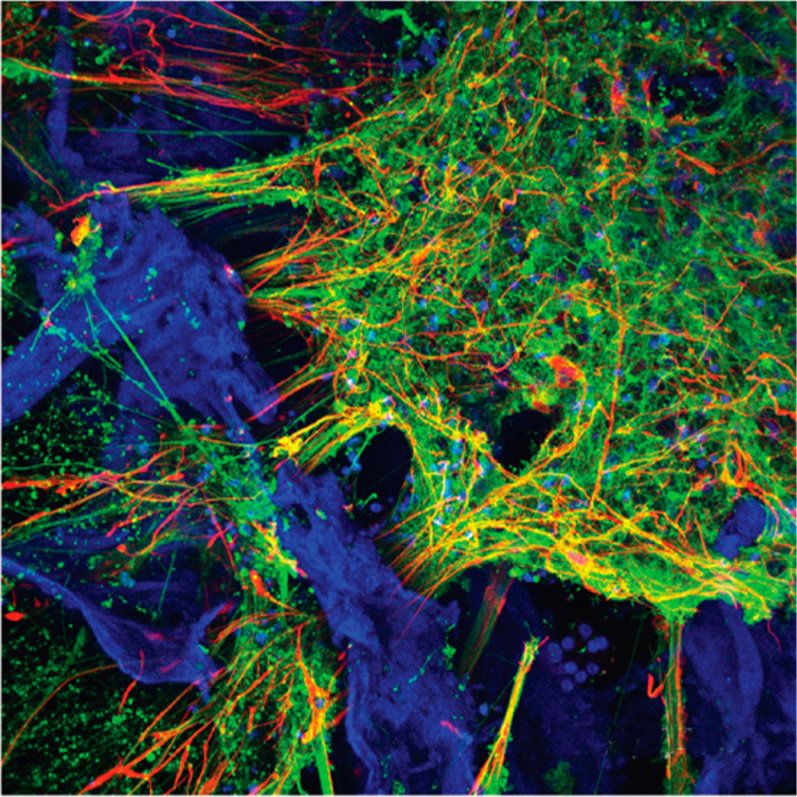Ice shelves perform a vital function in slowing down the rate of glacier melt in Antarctica, so scientists keep an eye on them for signs of collapse. And as the continent’s largest, the Ross Ice Shelf is particularly important. After monitoring seismic activity over a few years, researchers noticed that the Ross Ice Shelf is “singing” – and listening out for changes in that song could be an early warning system for potential problems.
Get the latest international news and world events from around the world.

Vincent Lafforgue Wins The 2019 Breakthrough Prize In Mathematics
The 2019 Breakthrough Prize in Mathematics recipient is https://breakthroughprize.org/Laureates/3/L3838” target=”_blank” rel=” nofollow noopener noreferrer” data-ga-track=” ExternalLink: https://breakthroughprize.org/Laureates/3/L3838”>Vincent Lafforgue of the CNRS and Institut Fourier, Université Grenoble Alpes in France. Lafforgue was awarded the prize “f or ground breaking contributions to several areas of mathematics, in particular to the Langlands program in the function field case,” the Breakthrough Prize https://breakthroughprize.org/Laureates/3/L3838” target=”_blank” rel=” nofollow noopener noreferrer” data-ga-track=” ExternalLink: https://breakthroughprize.org/Laureates/3/L3838”>website notes. (Watch the short video “Vincent Lafforgue: 2019 Breakthrough Prize in Mathematics” Click on photo to start video.
target=”_blank” rel=” nofollow noopener noreferrer” data-ga-track=” ExternalLink: https://www.youtube.com/watch?v=ADLbv6nREyM”>here.)

Scientists grow functioning human neural networks in 3D from stem cells
A team of Tufts University-led researchers has developed three-dimensional (3D) human tissue culture models for the central nervous system that mimic structural and functional features of the brain and demonstrate neural activity sustained over a period of many months. With the ability to populate a 3D matrix of silk protein and collagen with cells from patients with Alzheimer’s disease, Parkinson’s disease, and other conditions, the tissue models allow for the exploration of cell interactions, disease progression and response to treatment. The development and characterization of the models are reported today in ACS Biomaterials Science & Engineering, a journal of the American Chemical Society.
The new 3D brain tissue models overcome a key challenge of previous models –the availability of human source neurons. This is due to the fact that neurological tissues are rarely removed from healthy patients and are usually only available post-mortem from diseased patients. The 3D tissue models are instead populated with human induced pluripotent stem cells (iPSCs) that can be derived from many sources, including patient skin. The iPSCs are generated by turning back the clock on cell development to their embryonic-like precursors. They can then be dialed forward again to any cell type, including neurons.
The 3D brain tissue models were the result of a collaborative effort between engineering and the medical sciences and included researchers from Tufts University School of Engineering, Tufts University School of Medicine, the Sackler School of Graduate Biomedical Sciences at Tufts, and the Jackson Laboratory.

Sapphire gem-based ‘transparent’ armor protects soldiers from snipers
Made from a synthetic version of the highly-prized sapphire gemstone, new transparent armor is lighter, thinner and pulverizes bullets on impact.
Currently used by the military on powerful missile launchers and state-of-the-art fighter jets, the unusual transparent armor also has wide-ranging potential to protect troops on the battlefield.
Sapphire gems have long been sought after for their stunning blue beauty, but synthetic sapphires are prized for combat applications. The sapphire is harvested synthetically, producing pure sapphires that are transparent like glass — instead of the iconic blue.



The Biotech Innovation That Will Transform Society Has Arrived (Hint: It’s Not CRISPR)
Michael Schein: How did you end up working at the forefront of biology and technology?
Andrew Hessel: I have the strangest career ever. I originally got into the life sciences simply because all the other areas of technology just weren’t that interesting to me. Most technology falls apart and ends up in the junkyard. Cars rust. Even buildings can burn down. But biotech is different because even though organisms die, DNA gets passes on. Unfortunately, as I quickly learned, most scientists make really crappy money. So I thought: Let me find a way to pursue what I’m interested in but in a way that lets me make a good living. With that in mind, I’ve detoured into a medley of different technology companies. Eventually I made my way to work that’s at the intersection of biological research and computers. That’s how I ended up doing what I do now.
Schein: Tell us about the specific kind of biotech that takes up most of your headspace these days.

Doctors Can Finally 3D Print Human Tissue, Ligaments and Tendons
Biomedical engineers have successfully 3D printed human ligaments and tendons, giving hope to patients suffering from tears and ruptures.
After two years of intensive research, biomedical engineers have successfully 3D printed the complex structures of human ligaments and tendons.

First proof of quantum computer advantage
For many years, quantum computers were not much more than an idea. Today, companies, governments and intelligence agencies are investing in the development of quantum technology. Robert König, professor for the theory of complex quantum systems at the TUM, in collaboration with David Gosset from the Institute for Quantum Computing at the University of Waterloo and Sergey Bravyi from IBM, has now placed a cornerstone in this promising field.